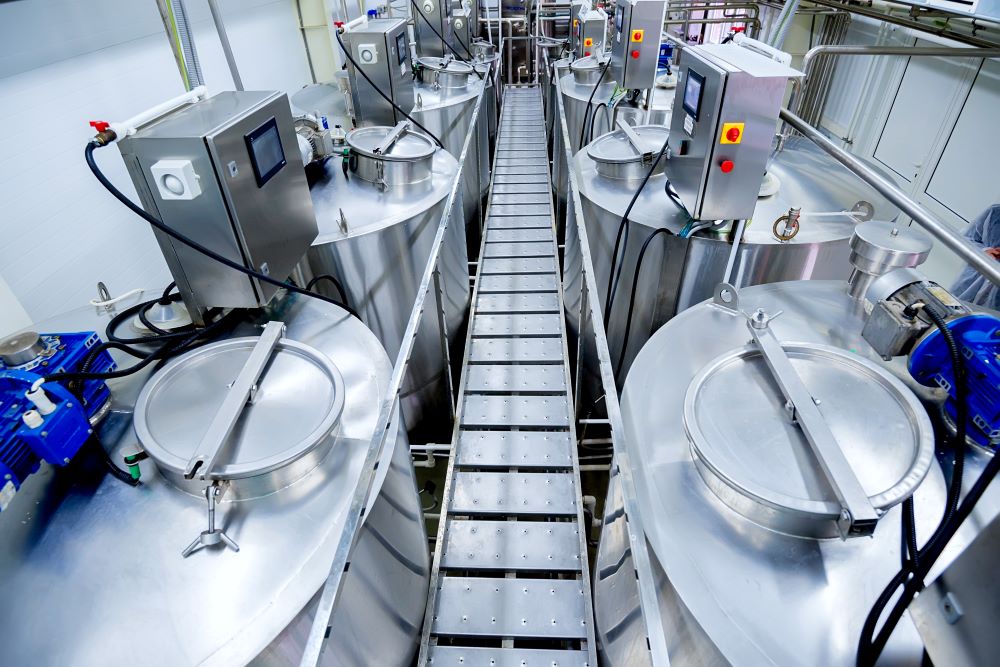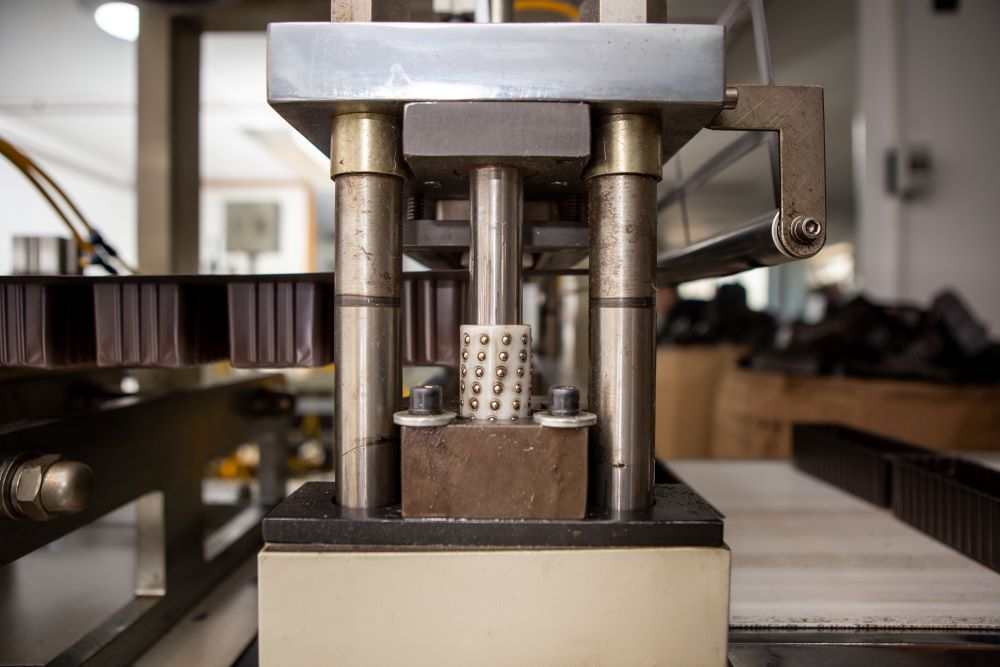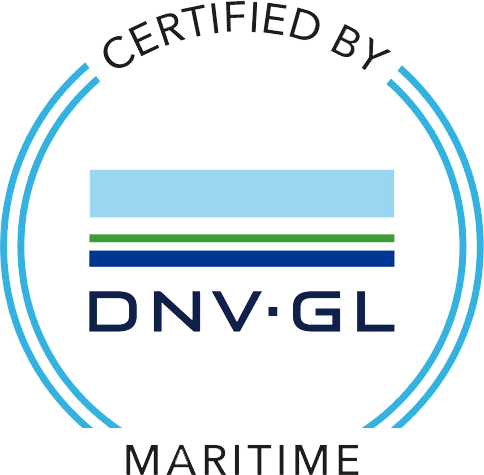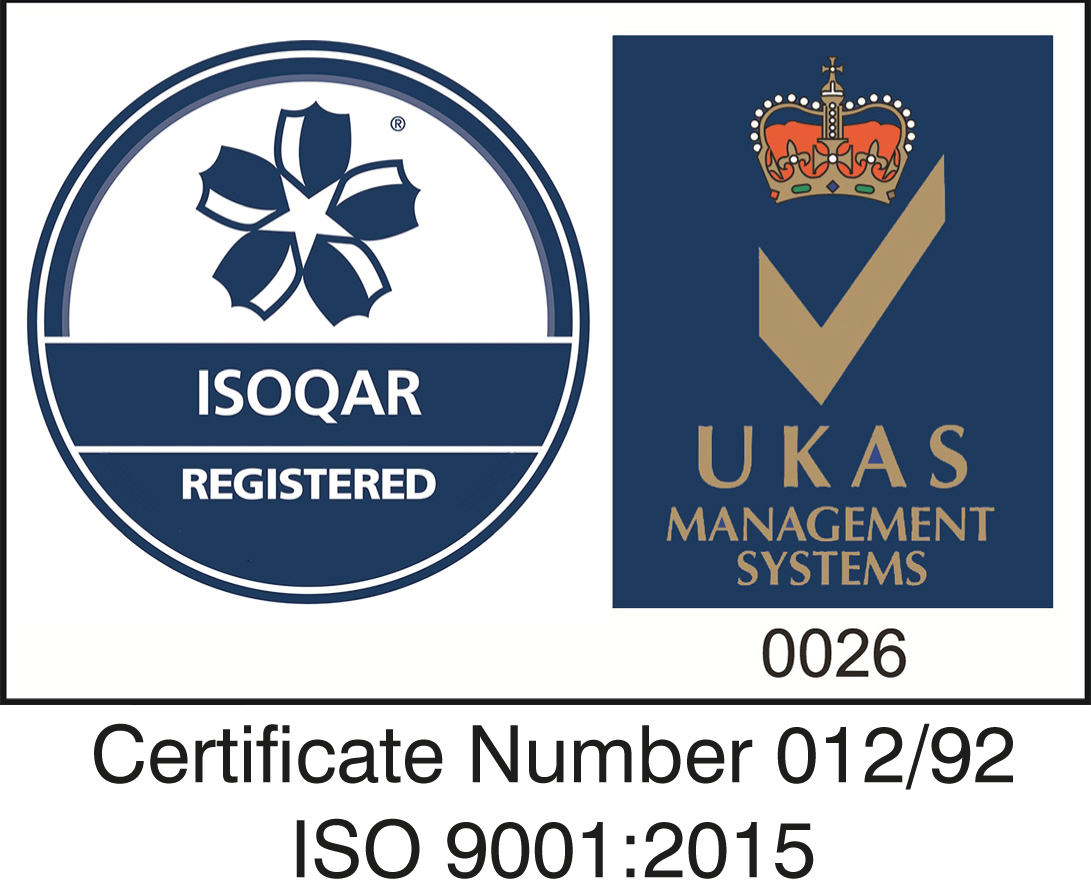Exploring the use of hydraulics & pneumatics in food processing
If you’re a follower of the blog articles that we add to the Derek Lane website then you’ll know that we have covered hydraulics in immense detail already.
We have already covered the everyday usage of hydraulics, as well as the technological applications in the marine industry, for example. This time around we will be covering the use of hydraulics in food processing in an attempt to continue our explanation of just how transferable the technology is.
An overview of hydraulics in food processing
Almost every industry utilises hydraulics in one way or another, and food processing is no exception. In fact, without the application of hydraulics, it is safe to say that the industry would pretty much grind to a halt.
Food and beverage processing requires accuracy and intricacy, so the application comes despite the misconception that hydraulics are only applied to heavy-duty machinery. The reality is that hydraulics are used in chopping, cutting, dicing and slicing systems – as well as aspects of transportation, packaging and delivery.
So, let’s explore this in more detail, taking you through a typical food processing timeline chronologically.

Hydraulics used in food transportation
Ingredients and products need to be moved efficiently across different areas of the processing plant, and hydraulics help this to happen. When ingredients are delivered to any processing facility, they may be transported in bulk using a forklift. Forklift hydraulics use pressurised fluid to raise and lower the forks with the load attached. You can read this piece from APEX Companies, which goes into great detail on the critical components of forklift hydraulics.
For operations that actually sort raw ingredients, be it based on size, weight or otherwise, conveyor systems can be utilised to get the job done. Fast and efficient, they are designed to automatically transport loads and materials within an area – thus reducing the likelihood of human error, workplace risks and labour costs. There are dozens of types of conveyor systems in what is a very nuanced market, but plenty will use hydraulic or pneumatic motors to maintain a steady rolling method of transportation.
Hydraulics used in food processing
Hydraulics really come to the fore when we arrive at the processing of the food and beverage products that we all enjoy. Production lines will often need to operate at high speeds, pressures or temperatures – all of which can be created through the deployment of hydraulic or pneumatic systems. These systems are working at almost every stage of prep and processing:
– Systems used to cut or process the raw ingredients
– Transportation systems, as mentioned previously
– Blending and mixing systems
– Dispensing systems
– Transportation systems, as mentioned previously
– Creation and sealing of packaging and bottling, more on that below
Pneumatic cylinders can be used to provide precise and accurate control during separation when preparing ingredients, such as in the production of cheese, where whey is separated from the curd.
Meanwhile, hydraulic systems provide consistent torque and power for mixing processes, that often need to be maintained for long periods of time. Hydraulic systems are reliable and, while they do need servicing and maintenance, they are consistent and can be left to operate for long periods of time if they are kept in good condition. In a business where ingredients need to be managed to the milligram to ensure both taste and cost-effectiveness, this reliability is of paramount importance.
The food preparation process uses compressed air consistently, particularly for tasks that contain repetition like cutting, shaping and organisation. But compressed air doesn’t just happen, of course, an air compressor is required to generate this, which is held to stringent purity standards.

Hydraulics used in food packaging
Once food and beverage products have been created, they need to be packaged and branded ready for the shelves in your local supermarket.
Pneumatic systems are used when filling or sealing food packaging, such as plastic wrapping, the sealing of bottles and cans, blow-moulding and manipulating packaging to a desired shape.
Air compressors are used to generate high-pressure air currents that clean the packaging before it is transported onward.
Hydraulics will then come back into play once the packaging process is complete, as no doubt the finished goods will then need to be transported onward to the shipping area of the facility. This could be done through a conveyor system or a heavy-duty forklift.

The challenges that hydraulics present
Hydraulic and pneumatic systems are critical for the food processing chain to function, but they do not come without their challenges:
– Even though these systems can play a role in cleaning and sterilization, the same needs to be applied to them. They need to be cleaned regularly to maintain a high level of performance.
– This presents a challenge, as cleaning agents can be corrosive depending upon the material used to build the outer casing of the systems. These days, stainless steel is the go-to material which is robust in the face of degradation, as well as being able to handle high temperatures and stresses whilst maintaining performance.
– Hydraulic systems need to remain lubricated using a mixture of hydraulic fluid, compressor oil and gear oil. The management of these liquids in conjunction with the rigorous food hygiene standards can prove challenging, but food-grade lubricants have been developed and are continuing to be developed to push the standard forward. Regardless, the risk of cross-contamination from faulty equipment will always be there.










